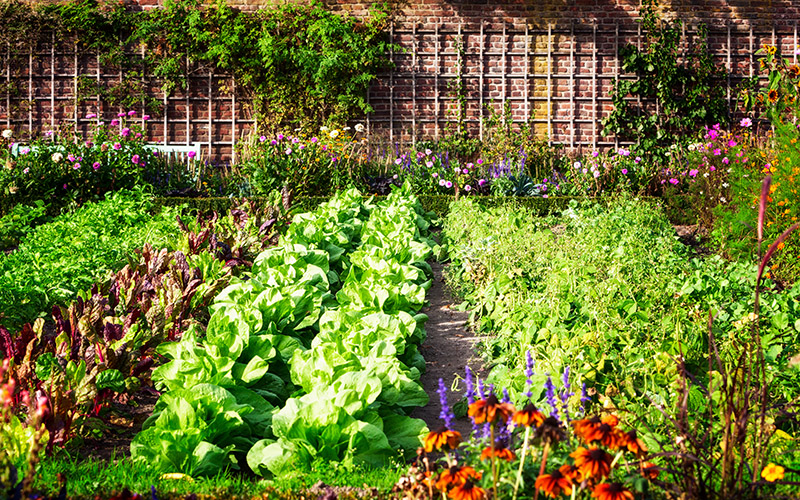Many Uses of Used Coffee Grounds in Your Garden & Around the Home
Coffee is a favorite morning beverage for many, but what happens to the used coffee grounds after that last sip? Surprisingly, used coffee grounds can have many uses in your garden and around the home.
In the garden, used coffee grounds can be used as a natural fertilizer, pest repellent, and soil amendment. Coffee grounds are rich in nitrogen, phosphorus, and potassium, making them an excellent fertilizer for plants that require an acidic soil environment, such as blueberries, azaleas, and rhododendrons. The high nitrogen content in coffee grounds also makes them an effective pest repellent against slugs and snails. Simply sprinkle the coffee grounds around the base of plants to create a barrier that these pests will avoid.
Used coffee grounds can also be added to compost bins to increase the nutrient content of the compost. Coffee grounds are considered a green compost ingredient, which means they are high in nitrogen and can help balance the carbon-to-nitrogen ratio of the compost. The high acidity of coffee grounds can help break down organic matter in the compost, resulting in a nutrient-rich soil amendment for your garden.
In addition to their uses in the garden, used coffee grounds can also have many applications around the home. They can be used as a natural deodorizer for the refrigerator or as a cleaning agent for pots and pans. The coarse texture of coffee grounds makes them an effective abrasive for scrubbing away stubborn stains, and their natural acidity can help remove grease and grime.
Used coffee grounds can even be repurposed for beauty and skincare uses. The caffeine in coffee grounds has been shown to have anti-inflammatory properties, making them a popular ingredient in homemade face masks and body scrubs. The coarse texture of coffee grounds can also help exfoliate dead skin cells, leaving your skin feeling smooth and refreshed.
Top 7 Creative Ways to Reuse and Recycle Used Coffee Grounds
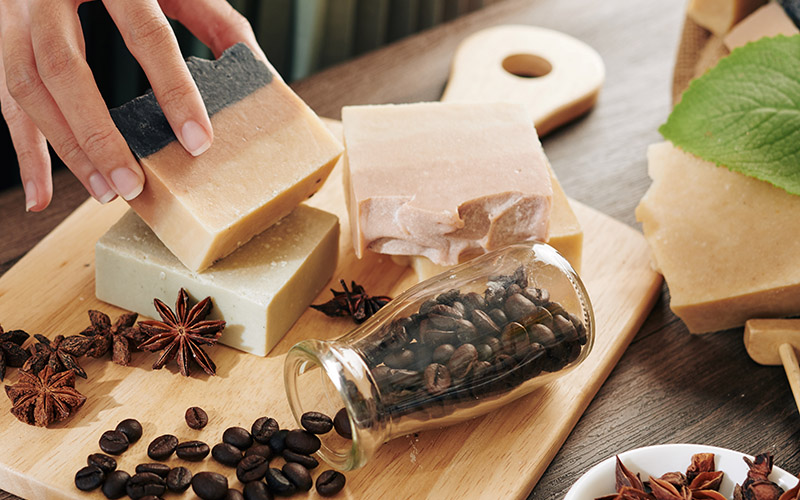
1. Make Coffee Grounds Soap
Used coffee grounds can be mixed with a natural soap base and molded into bars of soap. The natural exfoliating properties of the coffee grounds make for a perfect body scrub soap that can be used for exfoliation.
Making soap using used coffee grounds is a straightforward process that requires only a few ingredients.
Here’s a simple recipe:
Ingredients:
- 1 pound of melt and pour soap base
- 1/4 cup of used coffee grounds
- 1 tablespoon of coffee fragrance oil (optional)
Instructions:
- Cut the melt and pour soap base into small cubes and place them in a heatproof container.
- Melt the soap base in a double boiler or in the microwave. If using the microwave, heat the soap base in 30-second intervals, stirring in between each interval until it is fully melted.
- Add the used coffee grounds and coffee fragrance oil to the melted soap base and stir well.
- Pour the soap mixture into soap molds and allow it to cool and harden for several hours.
- Once the soap has hardened, remove it from the molds and store it in an airtight container.
And that’s it! Your homemade coffee ground soap is ready to use. The natural exfoliating properties of the coffee grounds will make for a perfect body scrub soap that can be used for exfoliation.
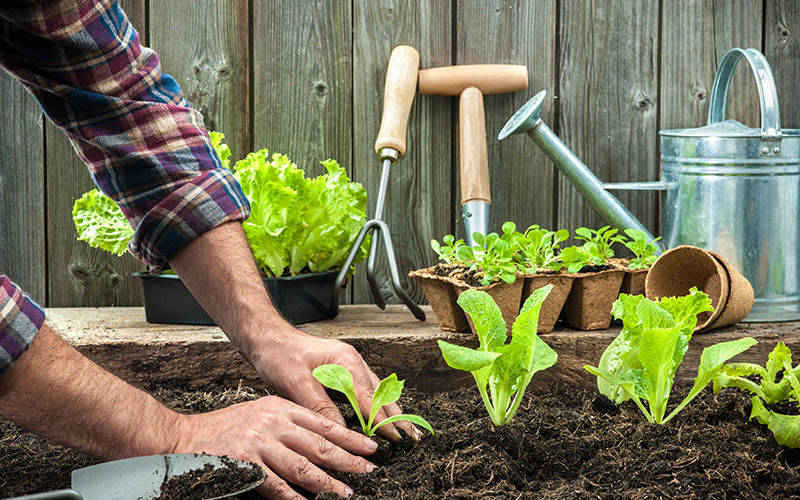
2. Fertilize Your Garden
As mentioned earlier, coffee grounds are high in nitrogen and make a great fertilizer. Mix used coffee grounds into the soil in your garden or sprinkle them around the base of plants to help them grow healthy and strong.
Fertilizing your garden with used coffee grounds is a simple process that can help improve the health of your plants.
Here’s how to do it:
- Collect your used coffee grounds. You can either collect them from your own coffee pot or ask a local coffee shop if they have any to give away.
- Let the coffee grounds dry out for a few days. Wet coffee grounds can clump together, making them difficult to work with.
- Sprinkle the dried coffee grounds around the base of plants in your garden. Be sure to spread them out evenly to avoid creating clumps.
- Work the coffee grounds into the soil using a gardening fork or rake. This will help the nutrients from the coffee grounds to penetrate the soil and be absorbed by the plant roots.
- Water the plants as you normally would. The water will help the coffee grounds break down and release their nutrients into the soil.
- Repeat the process every few weeks throughout the growing season. This will help keep your plants healthy and strong.
It’s important to note that coffee grounds are acidic, so they should only be used on plants that prefer an acidic soil, such as azaleas, blueberries, and rhododendrons. If you have plants that prefer a neutral or alkaline soil, it’s best to use a different type of fertilizer. Additionally, coffee grounds should be used in moderation, as too much can make the soil too acidic and harm the plants.
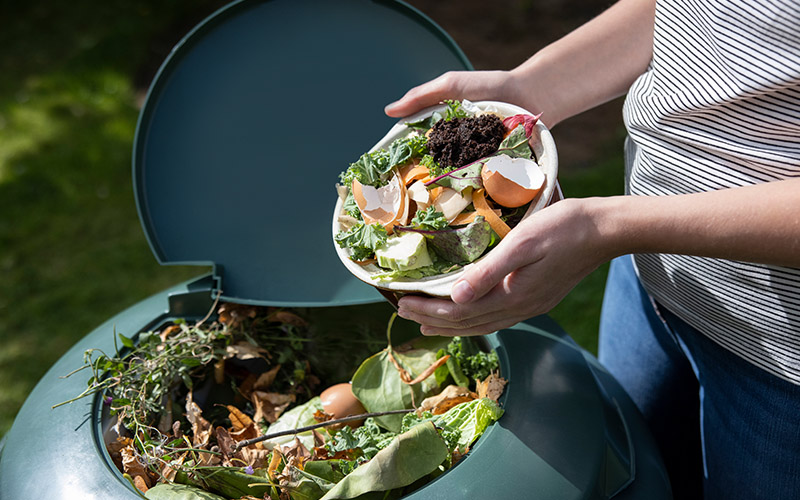
3. Use Them for Composting
Used coffee grounds are an excellent addition to compost bins as they are high in nitrogen, which can help balance the carbon-to-nitrogen ratio of your compost.
Here’s how to use used coffee grounds for composting:
- Collect your used coffee grounds. You can either collect them from your own coffee pot or ask a local coffee shop if they have any to give away.
- Let the coffee grounds dry out for a few days. Wet coffee grounds can clump together, making them difficult to work with.
- Add the dried coffee grounds to your compost pile. Be sure to mix them well with other compostable materials like food scraps, yard waste, and dry leaves.
- Turn the compost pile regularly to ensure that the materials are well-mixed and aerated. This will help speed up the composting process.
- Use the finished compost to amend the soil in your garden. The high nitrogen content in the coffee grounds will help enrich the soil, making it more fertile and better able to support plant growth.
It’s important to note that while coffee grounds are a great addition to compost, they should be used in moderation. Too much coffee grounds can make the compost too acidic and harm the plants. Aim to use no more than 25% coffee grounds in your compost pile and be sure to mix them well with other compostable materials to balance the carbon-to-nitrogen ratio.
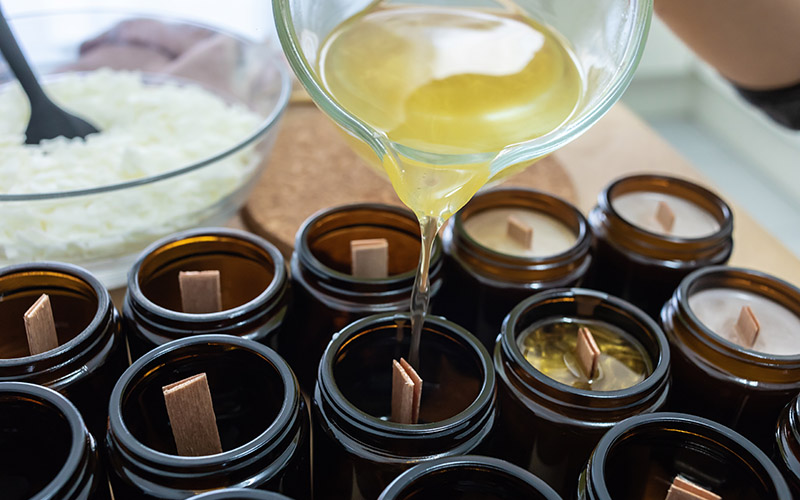
4. Make Coffee Grounds Candles
Mix used coffee grounds with melted wax and pour the mixture into a container with a wick to create a homemade candle. The coffee grounds will give the candle a unique texture and a subtle coffee aroma.
Making coffee grounds candles is a fun and easy DIY project that can give your home a unique and cozy atmosphere.
Here’s how to make coffee grounds candles:
Materials:
- 1 pound of soy wax flakes
- Candle wicks
- 1/4 cup of used coffee grounds
- Candle dye (optional)
- Candle fragrance oil (optional)
- Double boiler or a large heat-proof bowl and a saucepan
- Heat-resistant container for the candle
Instructions:
- Prepare your container by attaching the wick to the center of the container. You can use a wick sticker or glue to attach the wick to the bottom of the container and hold it in place while you pour the wax.
- Melt the soy wax flakes in a double boiler or heat-proof bowl placed over a saucepan of boiling water. Stir the wax flakes occasionally until they are fully melted.
- Add the coffee grounds to the melted wax and stir well. If you want to add color to the candle, you can also add candle dye at this point.
- Once the wax and coffee grounds are mixed together, remove the mixture from heat and add your fragrance oil. Stir well.
- Pour the wax mixture into the prepared container, making sure to keep the wick centered.
- Let the candle cool and harden completely, which will take several hours. Once the candle is fully hardened, trim the wick to 1/4 inch.
- Light your new coffee grounds candle and enjoy the cozy and unique aroma it gives off!
By using used coffee grounds in your candle, you can give your home a unique coffee aroma while also reducing waste. Experiment with different amounts of coffee grounds to find the perfect scent and texture for your candle.
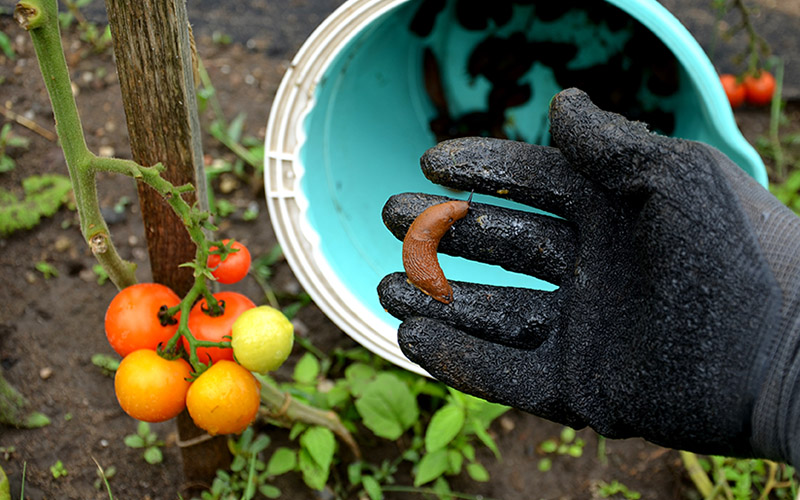
5. Use Them for Pest Control
Coffee grounds can be an effective pest repellent. Sprinkle them around the base of plants to deter pests like slugs and snails.
Used coffee grounds can be a natural and effective way to repel pests like slugs and snails in your garden.
Here’s how to use them for pest control:
- Collect your used coffee grounds. You can either collect them from your own coffee pot or ask a local coffee shop if they have any to give away.
- Let the coffee grounds dry out for a few days. Wet coffee grounds can clump together, making them difficult to work with.
- Sprinkle the dried coffee grounds around the base of plants that are susceptible to slug or snail damage. This will create a barrier that these pests will avoid.
- Reapply the coffee grounds after rain or watering, as moisture can cause the coffee grounds to break down and become less effective.
- Monitor your plants for signs of pest damage. If you notice any, you may need to increase the amount of coffee grounds you use or try a different method of pest control.
It’s important to note that coffee grounds are not a foolproof method of pest control and may not be effective for all types of pests. Additionally, coffee grounds should be used in moderation, as too much can make the soil too acidic and harm the plants. Experiment with different amounts of coffee grounds to find the right balance for your garden.
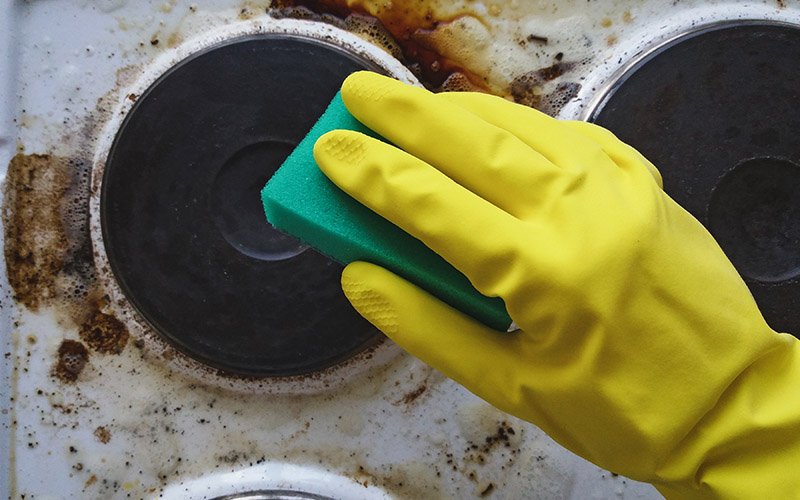
6. Clean Greasy Surfaces
The natural acidity in coffee grounds makes them an effective cleaning agent for greasy surfaces. Mix coffee grounds with a little bit of water to create a paste and use it to scrub greasy pots and pans.
Used coffee grounds can be an effective and natural cleaning agent for greasy surfaces.
Here’s how to use them for cleaning:
- Collect your used coffee grounds. You can either collect them from your own coffee pot or ask a local coffee shop if they have any to give away.
- Let the coffee grounds dry out for a few days. Wet coffee grounds can clump together, making them difficult to work with.
- Mix the dried coffee grounds with a small amount of water to create a paste. The amount of water needed will depend on how much coffee grounds you have, but you want the paste to be thick and easy to spread.
- Apply the coffee grounds paste to the greasy surface you want to clean. Use a sponge or cloth to scrub the surface, focusing on areas with the most buildup.
- Rinse the surface with water and wipe it dry with a clean cloth.
The coarse texture of the coffee grounds makes them an effective abrasive for scrubbing away stubborn stains, and their natural acidity can help remove grease and grime. This method can be particularly effective for cleaning greasy pots and pans.
It’s important to note that coffee grounds can be messy, so be sure to use this cleaning method on surfaces that won’t stain or discolor. Additionally, because coffee grounds are abrasive, avoid using them on delicate surfaces that can be scratched easily.
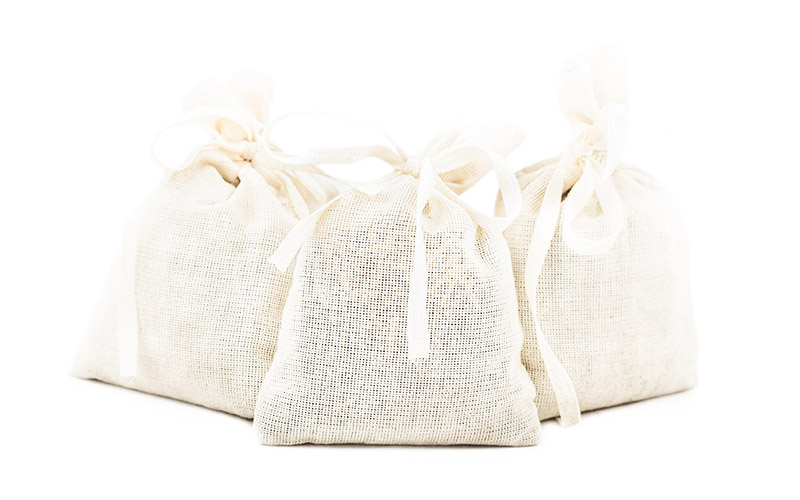
7. Use Them as Air Fresheners
Place used coffee grounds in a bowl or sachet and leave them in areas that need freshening up, like the fridge or closets. The coffee grounds will absorb unwanted odors and leave a fresh coffee scent.
Used coffee grounds can be used as a natural air freshener, thanks to their pleasant coffee aroma.
Here’s how to use them:
- Collect your used coffee grounds. You can either collect them from your own coffee pot or ask a local coffee shop if they have any to give away.
- Let the coffee grounds dry out for a few days. Wet coffee grounds can develop mold and create unwanted odors.
- Place the dried coffee grounds in a bowl or sachet. You can add a few drops of essential oil or a cinnamon stick to enhance the aroma.
- Place the bowl or sachet in areas that need freshening up, such as the refrigerator or closets.
The coffee grounds will absorb unwanted odors and leave a fresh coffee scent. You can also use this method to freshen up your car by placing a sachet under the seats.
It’s important to note that coffee grounds will only provide a subtle scent and may not be effective in larger or heavily soiled areas. Also, be sure to replace the coffee grounds every few weeks to maintain their effectiveness as an air freshener.
In Conclusion
Used coffee grounds can be a versatile and eco-friendly resource with many uses in your garden and around the home. So, before you throw out those used coffee grounds, consider repurposing them for a new purpose and benefiting both your garden and household in the process.

